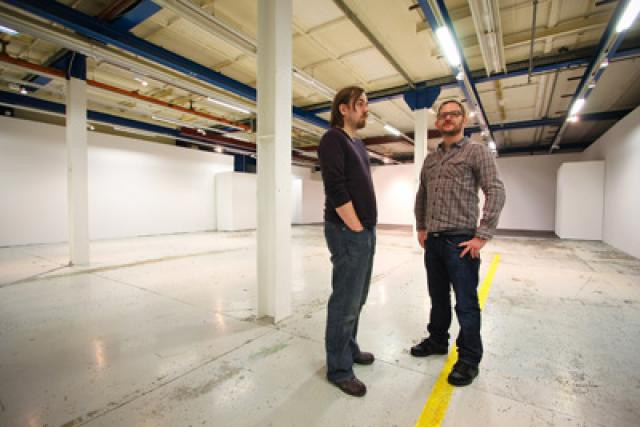“Infographythm takes its lead from Graphythm, another project we carried out in 2007, in the context of Luxembourg and the Greater Region being European Capital of Culture,” says Steph Meyers Programme Manager at CarréRotondes, of the exhibition running from February 24 until April 4, 2010. “Where that one looked at graphics in a more playful, off-beat way, so this one will do the same for infographics, which up until now have been seen as a somewhat dry and serious medium.”
Participants from the world of design were invited to submit personal activity reports for the month of August 2009, for inclusion in a book, Mapping August, to be released on March 9, 2010. “In keeping with the playful, less serious angle, we picked the month of August because, at least traditionally, nothing happens then,” remarks Arnaud Mouriamé, Vice-President of Design Friends, co-organiser of the exhibition. The personal activity reports could treat any aspect of the lives of the participants, but the results had to take the form of diagrams, graphs.
“Luxembourg is the right country for Infographythm when one considers that at the same time, we have a lot of good graphic artists, but also a lot of banks, for example,” continues Meyers. “These designers get asked by the banks to create graphics to illustrate things like end-of-year financial results. They are very staid, very heavy in terms of data. We wanted to show that more creative things can be shown through the same media, just as those data can themselves be shown more creatively.”
Start making sense
In this sense, the idea behind Infographythm is to subvert typical information graphics in this country by focusing entirely on what is not important, or even banal, whereby each one of the 31 participants’ projects becomes their own annual report, but only for the “silly season”. “There is a lot of superfluous information out there. By showing what is not important, it can place what is important in a context,” says Mouriamé. “For example, a participant may wish to display how many kilometres they travelled between August 1 and 31. This will give them the chance to do that visually, and in a playful way.” It is not meant to sound pedagogical: “really, it is just meant to showcase that graphics, and infographics in particular, can be very innovative, and we are just not used to that in Luxembourg. It is highly contemporary in that sense.”
How were the participants chosen from over 40 submitted? “There had to be a certain level of quality in terms of designing the graphics,” explains Meyers. “But there had to be data involved as well. The information represented in any given submission had to come from something concrete, no matter what it was,” continues Mouriamé. The information reports needed to be understandable for all. A pretty image is no good without a key to explain how it was derived.
In addition to the book and the exhibition, on 9 March there will be a lecture on infographics, entitled Simplexity, from Sven Ehmann, creative director at Berlin-based publisher Gestalten, as the co-editor of two books on the subject, 2008’s Data Flow – Visualising Information in Graphic Design, and the forthcoming Data Flow 2, he is well versed in it. In an interview with Andrew Losowsky, he states that he has had an interest for several years in “images that have a good way of getting information across, whatever the theme,” and he noticed that such images were becoming more and more common among the media in general.
Ehmann continues, “while infographics are not a new phenomenon in terms of creating an image to translate information, the past couple of years has seen the emergence of a more elaborate form of information graphics, where the people who create the graphics have become more like, say, journalists, rather than just designers who make something look good.”Things are different now in terms of how information is recorded and manipulated. As Ehmann says, “there is more data available, and a greater awareness of data, but that doesn’t mean there’s more understanding of data.” Infographythm may celebrate the trivial, but it also demonstrates that the trivial is recorded. And there is no harm in that at all.
